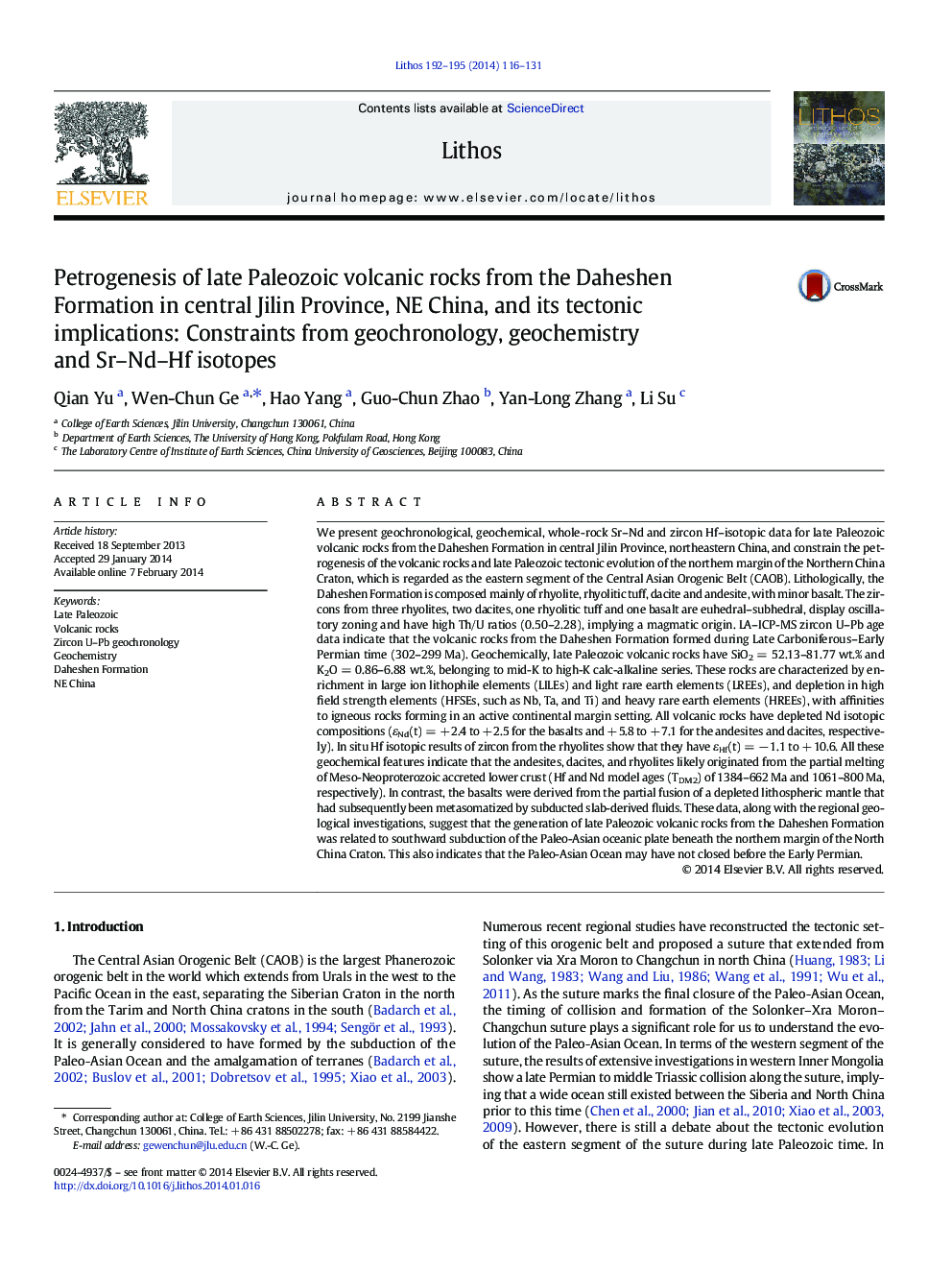| Article ID | Journal | Published Year | Pages | File Type |
|---|---|---|---|---|
| 4716045 | Lithos | 2014 | 16 Pages |
•The volcanic rocks in the northern margin of the NCC formed in 302–299 Ma.•Different origins of the basalts and the intermediate to acidic volcanics•The volcanic rocks formed in an active continental margin setting.•The Paleo-Asian Ocean had not been closed before the Early Permian.
We present geochronological, geochemical, whole-rock Sr–Nd and zircon Hf–isotopic data for late Paleozoic volcanic rocks from the Daheshen Formation in central Jilin Province, northeastern China, and constrain the petrogenesis of the volcanic rocks and late Paleozoic tectonic evolution of the northern margin of the Northern China Craton, which is regarded as the eastern segment of the Central Asian Orogenic Belt (CAOB). Lithologically, the Daheshen Formation is composed mainly of rhyolite, rhyolitic tuff, dacite and andesite, with minor basalt. The zircons from three rhyolites, two dacites, one rhyolitic tuff and one basalt are euhedral–subhedral, display oscillatory zoning and have high Th/U ratios (0.50–2.28), implying a magmatic origin. LA–ICP-MS zircon U–Pb age data indicate that the volcanic rocks from the Daheshen Formation formed during Late Carboniferous–Early Permian time (302–299 Ma). Geochemically, late Paleozoic volcanic rocks have SiO2 = 52.13–81.77 wt.% and K2O = 0.86–6.88 wt.%, belonging to mid-K to high-K calc-alkaline series. These rocks are characterized by enrichment in large ion lithophile elements (LILEs) and light rare earth elements (LREEs), and depletion in high field strength elements (HFSEs, such as Nb, Ta, and Ti) and heavy rare earth elements (HREEs), with affinities to igneous rocks forming in an active continental margin setting. All volcanic rocks have depleted Nd isotopic compositions (εNd(t) = + 2.4 to + 2.5 for the basalts and + 5.8 to + 7.1 for the andesites and dacites, respectively). In situ Hf isotopic results of zircon from the rhyolites show that they have εHf(t) = − 1.1 to + 10.6. All these geochemical features indicate that the andesites, dacites, and rhyolites likely originated from the partial melting of Meso-Neoproterozoic accreted lower crust (Hf and Nd model ages (TDM2) of 1384–662 Ma and 1061–800 Ma, respectively). In contrast, the basalts were derived from the partial fusion of a depleted lithospheric mantle that had subsequently been metasomatized by subducted slab-derived fluids. These data, along with the regional geological investigations, suggest that the generation of late Paleozoic volcanic rocks from the Daheshen Formation was related to southward subduction of the Paleo-Asian oceanic plate beneath the northern margin of the North China Craton. This also indicates that the Paleo-Asian Ocean may have not closed before the Early Permian.
Graphical abstractFigure optionsDownload full-size imageDownload as PowerPoint slide
